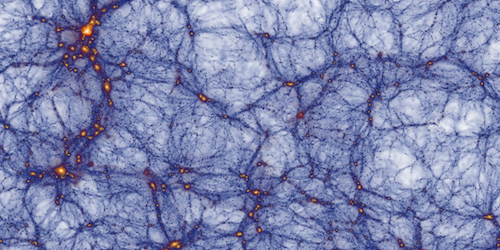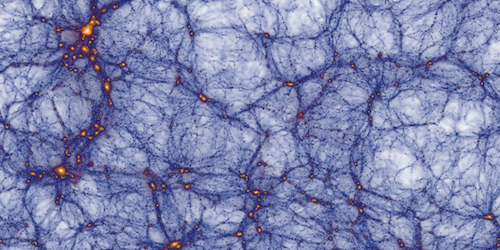The Heavy Limit of Dark Matter
Dark matter is often assumed to consist of particles that weigh as much as a proton but interact like a neutrino. However, dark matter particles could be much heavier, as well as much less interacting. New work from a team of theorists explores the upper limit of mass with a dark matter candidate that they call Planckian interacting dark matter (PIDM). The researchers show that the PIDM model implies a large number of primordial gravitational waves, which could produce a detectable signal in forthcoming cosmic microwave background (CMB) observations.
Dark matter candidates are not hard to come by. Many theories predict weakly interacting particles with masses near the electroweak scale (roughly 100 times the proton mass). These so-called WIMPs would presumably be created in the hot, dense, early Universe with an abundance that is consistent with the dark matter mass density observed in the current Universe.
The trouble is that collider experiments have yet to see any hints of WIMPs, which might mean that researchers will have to look beyond the electroweak scale. Mathias Garny of CERN and his colleagues from CP -Origins in Denmark propose a particle with a mass near another natural scale, the Planck mass ( times the proton mass, or about a microgram). The team assumed these PIDM particles interact with ordinary matter only through gravitation and that large numbers of them formed in the very early Universe during the cosmological epoch called “reheating.” For this model to work, however, the temperature of reheating would have to be higher than usually assumed. A hotter reheating would result in more gravitational waves, which could be confirmed (or ruled out) by next-generation CMB experiments.
This research is published in Physical Review Letters.
–Michael Schirber





